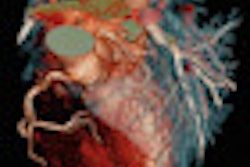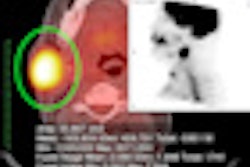Incomplete documentation in abdominal ultrasound reports is common and contributes to loss of revenue at many practices, according to a new study published in the June issue of the Journal of the American College of Radiology.
Tennessee researchers assessed the frequency, characteristics, and financial impact of deficiencies in physician documentation in abdominal ultrasound reports. They found that not only is it common for reports to be inadequate, report deficiencies resulted in lost income of more than 5% (JACR, June 2012, Vol. 9:6, pp. 403-408).
Physician documentation is necessary for CPT coding, which is a crucial part of the payment process, wrote lead author Dr. Richard Duszak, of Mid-South Imaging and Therapeutics in Memphis, and colleagues. When report documentation is incomplete, undercoding can result.
Duszak's study included 12.7 million radiology reports from 37 practices to identify and analyze abdominal ultrasound reports. (For a correctly documented abdominal ultrasound CPT code, description of eight elements must be included: liver, gallbladder, bile ducts, pancreas, spleen, kidneys, abdominal aorta, and inferior vena cava.)
Using standard CPT criteria, the team categorized exams as complete (all eight required elements documented) or limited (fewer than eight elements included). Within the limited documentation group, reports were categorized as "very likely complete" when seven or eight elements were documented, "likely complete" when at least six elements were documented, and "possibly complete" when at least five elements were documented.
Of 336,062 abdominal ultrasound reports by 1,136 radiologists:
- 75.1% documented all eight elements for CPT coding as complete examinations
- 7.7% documented seven elements
- 5.6% documented six elements
- 4.8% documented five elements
- 13.5% documented four or fewer elements
For very likely, likely, and possibly complete examination models, the researchers found report deficiencies in 9.3%, 15.5%, and 20.2% of cases, respectively, which resulted in declines of 2.5%, 4.2%, and 5.5% in legitimate professional payments.
Of 106,168 examinations labeled "complete," 87.4% fulfilled CPT criteria, the group found. In 60.6%, reports were erroneous or too ambiguous for code assignment. The spleen (41.2%) was the most frequent element neglected, and documentation deficiencies were less frequent for high-volume radiologists.
How can radiologists improve their reports -- and avoid underpayment? Structured reporting could help, according to Duszak and colleagues.
"Radiologist documentation deficiencies in abdominal ultrasound ... collectively contribute to substantial losses in legitimate professional revenue," they wrote. "In addition to increased physician training, structured reporting tools may help practices improve the overall quality of their radiology reports."




















